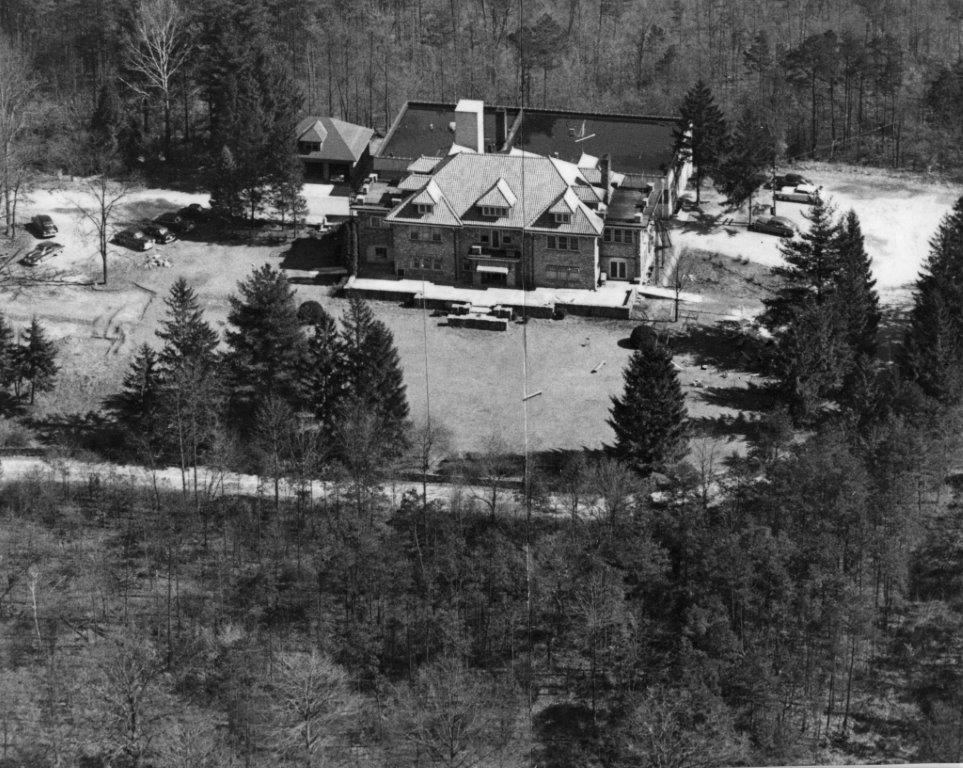In the summer of 1948, as the number of polio cases continued to climb in the area, infected children throughout the region were sent to the Asheville Orthopedic Home on Sweeten Creek Road (today’s CarePartners). During the early stages of the health crisis, reporter Clarence R. Sumner played a crucial role in promulgating the center’s efforts and needs.
On July 11, his article in the Sunday edition of the Asheville Citizen Times examined the emerging financial strains placed upon the hospital as it hired additional doctors and staff to combat the outbreak. In the piece, Sumner speaks with Frank Barber, chair of the organization’s finance committee, who declared:
“If the people of Western North Carolina could walk with me through the Orthopedic home and see those brave, smiling little faces, I know we would have funds aplenty. Courage like that cannot be ignored because it has something of the splendor of eagles.”
Taking Barber’s suggestion to heart, Sumner brought readers along for a tour of the facility in the following day’s paper. “There is an air of quiet efficiency,” he writes. “No frenzied excitement or dashing about is in evidence, but there is plenty of hard determination.”
Along with its two wards, which could house 55 patients, Sumner reported that 15 new beds had been added to the site’s regular clinic room, in addition to 30 more beds in a temporary hospital tent.
Later in the article, Sumner describes donning a sterile white gown before entering one of the area’s isolation wards. Inside, he describes young patients receiving plasma transfusions and oxygen. At the time there was no known cure for polio. However, Sumner points out, “The people of Western North Carolina can rest assured that the treatment technique at the home is modern, rigid and in about 85 per cent of the cases completely effective.”
Praise for the institution continued in a July 13 editorial, wherein The Asheville Citizen describes the center as “a tower of strength” and “the best home for the afflicted patients.”
By July 14, 1948, community members and organizations were sending in checks to show their support. The local police union offered the first donation of $100 (roughly $1,070 in today’s dollars). But it was a smaller, anonymous $6 contribution — signed “A Mother” — that made the biggest impression on Barber, who told the paper:
“That gift represents the spirit that has motivated those who have been striving to build the home’s facilities and staff to where it would be strong enough to meet the impact of this emergency situation. They have given unstintingly of their time and efforts and the fact that the home now stands as a refuge for all stricken children in this mountain area is in itself a monument to their efforts.”
Editor’s note: This is part of an ongoing series exploring the 1948 polio outbreak. Previous articles can be found at avl.mx/760 and avl.mx/77k. Punctuation and spelling are preserved from the original documents.




Before you comment
The comments section is here to provide a platform for civil dialogue on the issues we face together as a local community. Xpress is committed to offering this platform for all voices, but when the tone of the discussion gets nasty or strays off topic, we believe many people choose not to participate. Xpress editors are determined to moderate comments to ensure a constructive interchange is maintained. All comments judged not to be in keeping with the spirit of civil discourse will be removed and repeat violators will be banned. See here for our terms of service. Thank you for being part of this effort to promote respectful discussion.